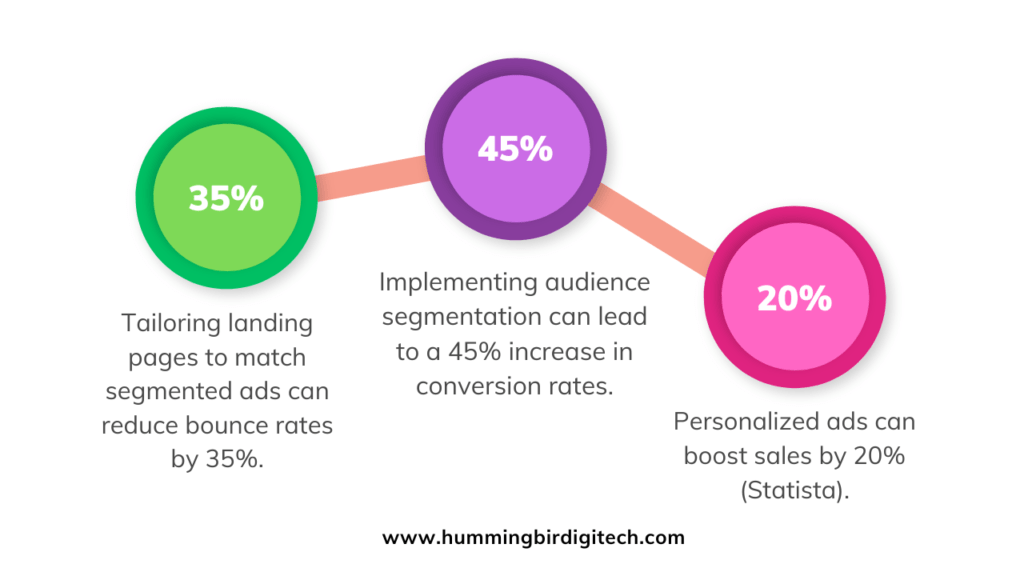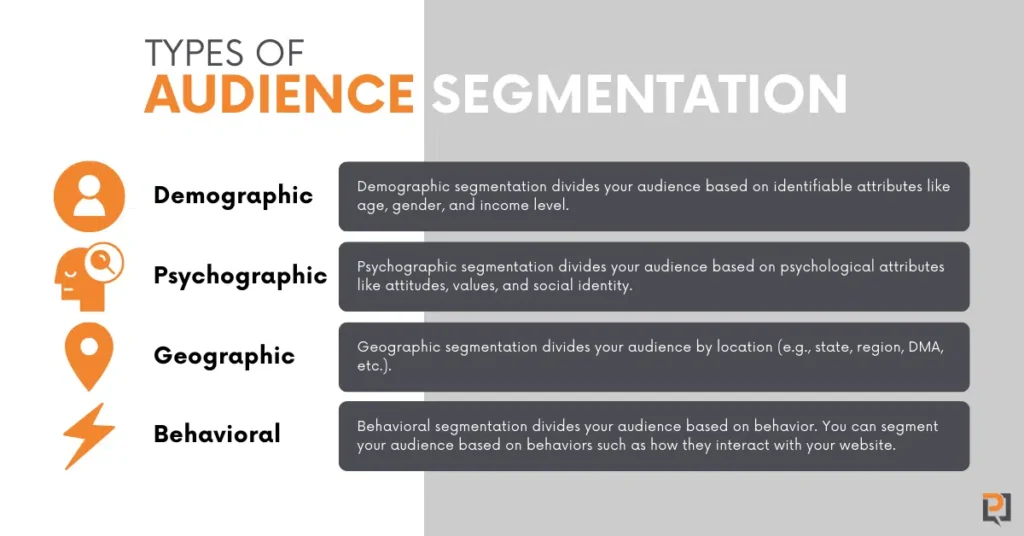Digital advertising is a vital part of modern marketing, yet many businesses struggle to see their ads convert. Do you want to improve your ROI? If you’re investing heavily in ad campaigns but not seeing results, you’re not alone. The good news is, sometimes a single strategic tweak can drastically improve your ad performance. Let’s explore this tweak and delve into insights and data to help you transform your ads into conversion powerhouses.
The Common Conversion Problems Resulting in Poor ROI
Before we jump into the solution, let’s identify the usual suspects causing ads to underperform:
- Irrelevant Targeting: Ads may not be reaching the right audience.
- Weak Ad Copy: The message might not be compelling.
- Poor Landing Pages: Even effective ads can fail if the landing page is subpar.
- Unclear CTA: The call-to-action (CTA) might be confusing or uninspiring.
The Game-Changing Tweak for Improved ROI: Audience Segmentation
While all these factors are crucial, the one tweak that often makes the most significant impact is audience segmentation. Properly segmenting your audience allows you to tailor your ads more precisely, making them resonate more effectively.
Why Audience Segmentation Works?

A study by eMarketer found that businesses using segmented campaigns saw a 760% increase in revenue. Here’s why segmentation is powerful:
- Relevance: Different segments have unique needs and pain points. Tailoring ads to these specifics makes them more engaging.
- Personalization: Personalized ads catch attention better. Data from Statista shows personalized ads can boost sales by 20%.
- Efficient Spend: Targeting relevant segments reduces wasted ad spend and increases ROI.
Implementing Effective Audience Segmentation
- Analyze Your Data: Start with your existing customer data. Look for patterns in demographics, behaviors, and purchase history.
- Create Buyer Personas: Develop detailed personas for each segment, including demographics, preferences, challenges, and motivations.
- Leverage Advanced Tools: Use tools like Facebook Ads Manager and Google Analytics to identify and target specific segments.
- Craft Tailored Messages: Develop ad copy and creatives that speak directly to each segment’s unique needs and desires.
- Test and Optimize: Continuously test messages, creatives, and targeting strategies. Use A/B testing to find the most effective combinations.
Real-World Success of Excellent ROI: A Humanized Case Study

Image Credit: https://leadpost.com/wp-content/uploads/2022/11/Types-of-Audience-Segmentation.png
Meet Vineet, a marketing manager at “Eco-Chic,” a sustainable fashion brand. Despite running numerous ad campaigns, Vineet noticed that their ads were not converting as expected. The company was struggling to connect with their audience and was seeing a high bounce rate on their landing pages.
Determined to turn things around, Vineet decided to focus on audience segmentation. Here’s how she did it:
- Diving into Data: Vineet analyzed the company’s customer data and identified three key segments: eco-conscious millennials, busy professionals, and budget-conscious students.
- Creating Personas: She created detailed personas for each segment:
- Eco-Conscious Millennials: Passionate about sustainability, willing to pay a premium for eco-friendly products.
- Busy Professionals: Interested in sustainable fashion but have little time to shop.
- Budget-Conscious Students: Care about the environment but have limited funds.
- Targeted Messaging: Vineet crafted specific messages for each segment:
- Eco-Conscious Millennials: Highlighted the brand’s commitment to sustainability and ethical production.
- Busy Professionals: Emphasized the convenience of online shopping and quick delivery.
- Budget-Conscious Students: Focused on affordable, stylish options and student discounts.
- Using Advanced Tools: She used Facebook Ads Manager to target these segments precisely.
- Continuous Optimization: Sarah continuously tested different creatives and messages, refining her approach based on performance data.
The results were outstanding. Within three months, Eco-Chic saw:
- A 50% increase in conversion rates: Each segment responded positively to the tailored messages.
- A 35% reduction in bounce rates: The landing pages were optimized to match the ads, keeping visitors engaged.
- A 40% improvement in ROI: More efficient ad spend led to better overall performance.
Vineet’s story shows the power of understanding and addressing the unique needs of different audience segments. By humanizing her approach and focusing on relevance, she transformed Eco-Chic’s ad performance.
Conclusion
If your ads aren’t converting, it’s time to rethink your approach to audience segmentation. By understanding your audience better and tailoring your messages to their specific needs, you can significantly boost your ad performance. Start with thorough data analysis, create detailed personas, and use advanced targeting tools to implement your strategy. With continuous testing and optimization, you’ll be well on your way to turning your ad campaigns into powerful conversion drivers.
Remember, in digital marketing, relevance is king. Make your ads matter to your audience, and they’ll reward you with higher engagement and conversions.





